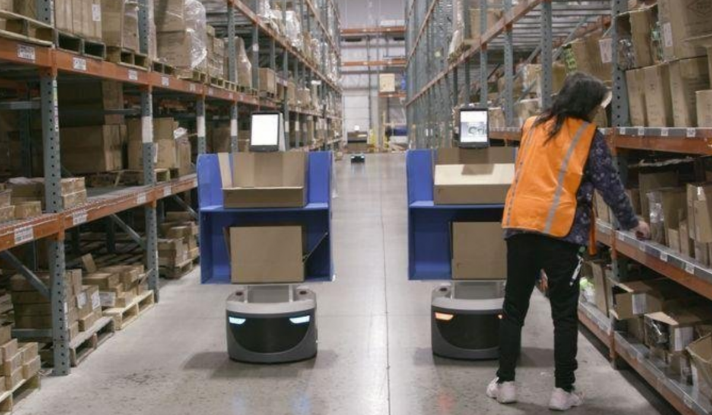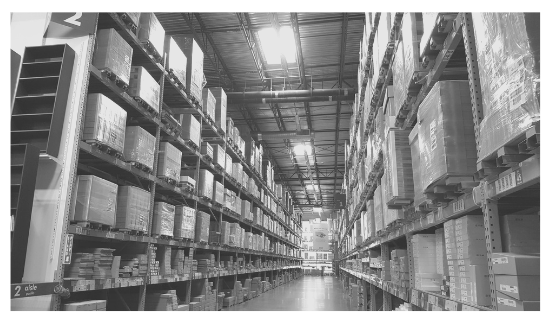
This blog is provided by Dave DuBose and Will O’Brien from True North Growth Partners, as a companion to their interview on Innovating Leadership, Co-creating Our Future. This interview Lasting Solutions for Distribution Center Labor Shortages aired on 9/10/19.
Of course, that title is a takeoff from Coleridge’s “The Rime of the Ancient Mariner”. The author referred to a thirsty sailor surrounded by saltwater that he cannot drink. This is what many distribution center (DC) operators face when they can’t attract and retain the workforce that they need to support their operations. With historically low unemployment, the demand for DC labor is escalating- a trend that will continue. This drives higher wages while the quality of the available workforce drops.
Other factors make this situation more complex. Job candidates may be unable to meet an organization’s hiring requirements for drug testing and work history. Lowering standards creates workforce reliability issues. Ecommerce is a big driver. Amazon (the biggest example) has over 100 fulfillment & sortation centers. The e-comm channel requires 4X the labor compared to retail and wholesale fulfillment. This creates a salary war, undercutting any loyalty that workers might have had. This is magnified at peak season.
How does a leader deal with all of this? Three strategies underpin a winning playbook:
- Reduce the Work Content
- Be a “Sticky Employer”
- Get the Most Out of Your Workforce
Strategy #1, “Reduce the Work Content,” is the focus of this blog
REDUCE THE WORK CONTENT OF THE FACILITY
Reducing work content is a challenge that belongs in the playbook. Analytical rigor is required to appropriately consider each option for achieving this goal and careful planning and execution is a must-have: these are not “quick fix” alternatives, but they can be very effective.
- DC Bypass is the method of flowing goods to the customer or store while bypassing the DC or fulfillment center. It is necessary to analyze volume and order history so that an effective program can be designed that will provide the relief to the facility and have minimal-to-no impact on supplier charges or the customer experience.
- Store-Based Fulfillment is growing rapidly. The most common version of this is BOPIS (Buy Online – Pickup In-Store). Walmart will ship an e-comm item to a store at no charge. Many grocers offer the increasingly popular curbside pick-up service. Others enable their stores to ship e-comm orders to customers’ homes. One retailer performs this function early in the morning, before the store opens for walk-in traffic. DSW stated that its stores are within 20 minutes of 70% of their customers, so they can’t afford to NOT take advantage of that proximity for improved speed and delivery cost. Target, Dick’s, Best Buy and others use store-based fulfillment as an economical way to compete against Amazon’s hyper-fast delivery model. Details related to how a retailer handles allocation, store operations, order management and small package carrier relationships are critically important. Creating and communicating a detailed plan ensures that leaders understand the assumptions about inventory, handling and transportation costs, as well as reductions in markdowns – and are committed to execution.
- Pop-Up Fulfillment Centers are used during peak seasons to provide relief from surges in demand. Advancements in robotics enable operators to slot more items in pop-ups than ever before, with reduced training needs and improved speed and customer service. Robots, in this case, Automated Mobile Robots (AMRs) from companies like Locus, Fetch Robotics and 6 Rivers can be deployed very quickly, typically in less than a day. The software that operates AMRs is cloud based, which eases the IT requirements. AMRs are safe around people and other mobile equipment. The interface between the worker and the AMR is very simple, so training for the associate takes only minutes. Worker productivity dramatically increases because the robot eliminates the need for the worker to walk the entire facility. Most AMR providers offer their products on a “Robot-As-A-Service” basis, avoiding the large capital outlay that is needed for traditional material handling equipment. There is great flexibility with AMRs as the number of machines can flex over time with volume.

AMRs in work environment
The two most significant advantages of pop-ups are reductions in labor and the cost of the last mile. By locating pop-up facilities in markets with dense demand, the operator shifts its labor burden from hiring hundreds of associates in a labor-constrained single market to hiring dozens of associates in each of a handful of locations across the country- a much more achievable task. The cost of the last mile is significant and is reduced by having pop-ups in dense markets. Given the success of pop-up DCs, operators are beginning to consider keeping them open year-round to augment distribution networks that need e-comm friendly solutions for speed, cost effectiveness and customer service. Careful product flow analysis and cost modeling ensures that the solution will deliver the intended benefits.
- Automated Material Handling Equipment (MHE) solutions offer different options for reducing labor requirements in large, capital-intensive DCs. Continued innovation in automated-storage-and-retrieval and goods-to-person systems, as well as in conveyors, sorters and put-walls, enable operators to realize significant labor savings. 60% of a DC worker’s time can be spent walking in the facility, sometimes as much as 15 miles per day. Innovative developments continue in pack station and auto-bagger technologies. Automated MHE solutions fit well in high-volume operations and these solutions require significant effort to properly design and select the appropriate equipment for each situation.
- Leverage a 3PL Partner: Finally, sophisticated 3PLs provide a wide range of services, from end-to-end fulfillment, including last mile delivery, to executing only the pieces of an operation that are most challenging to the business. A 3PL is a viable option for many scenarios. It is very important to perform due diligence in partner selection and in the integration of all processes and technologies to guarantee a flawless conversion and smooth operation.
If you are facing distribution or fulfillment challenges in your business, there are many options available to you. If you would like to discuss your situation with Will O’Brien or Dave DuBose, they can be reached at www.truenorthgrowthpartners.com.
To become a more innovative leader, you can begin by taking our free leadership assessments and then enrolling in our online leadership development program.
About the Authors
Dave DuBose is a senior supply chain professional with strong cross-industry experience including retail, consumer products, resources and high-tech in the North American and global theaters. Dave has held executive positions in logistics and supply chain in industry as well as consulting and has more than 30 years of professional experience. DuBose delivers innovative results and can translate business strategy into operating strategy and tactics. He has deep expertise in end-to-end business operations and in deploying business solutions from strategy through implementation. Dave is currently serving as the Columbus Roundtable board president the Council of Supply Chain Management Professionals. He is active in speaking and writing about contemporary supply chain issues.
Will O’Brien is a partner at True North Growth Partners where he works with organizations on the supply chain and operations sides of their business. He helps his clients overcome the things that hold back their growth and profitability. He has over 30 years of experience in supply chain and operations. He has held executive positions in both industry and consulting. As an executive at Lowe’s Home Improvement he helped to lead the development of the supply chain for that big box retailer during a period of rapid growth, from $35 billion to $50 billion in revenue. He also helped pioneer Lowe’s omni-channel fulfillment when its online sales were growing significantly. He successfully grew a mid-sized family owned supply chain consulting firm by over 50%, expanded its markets, improved its pricing, reengineered its sales and business development organization and created career paths and professional growth for its associates.





